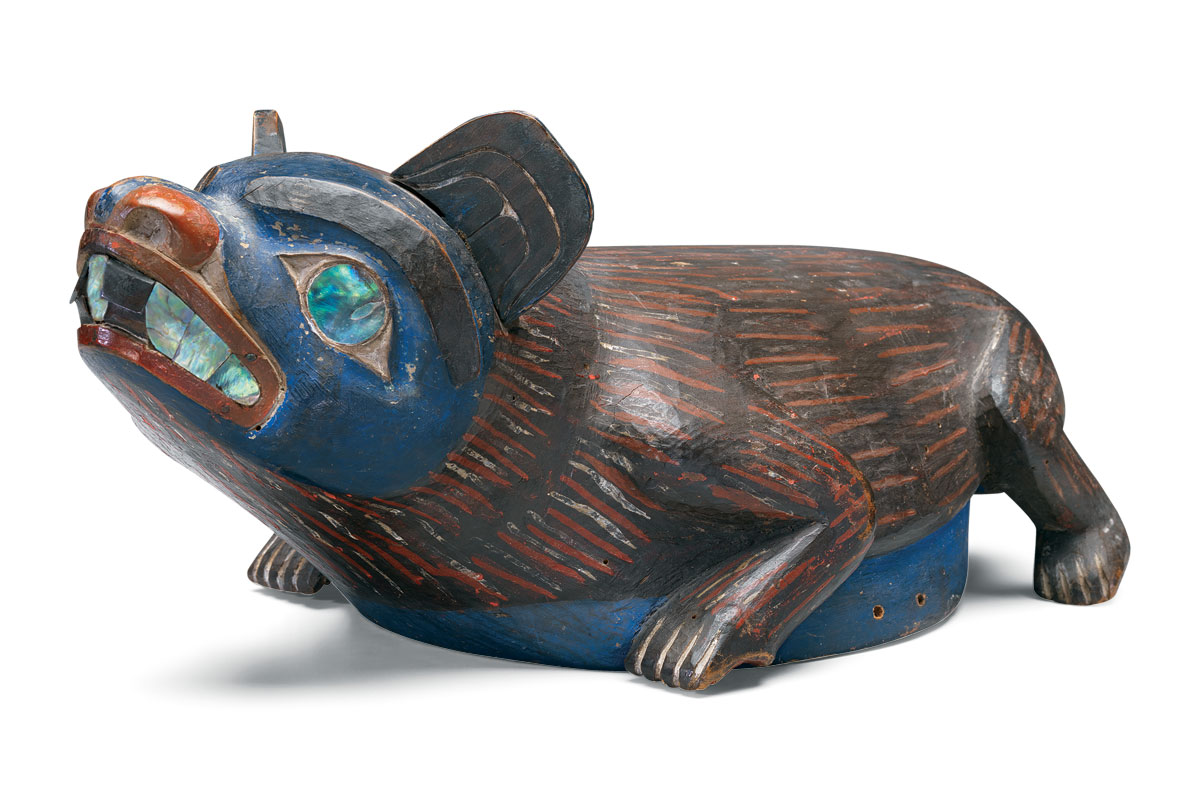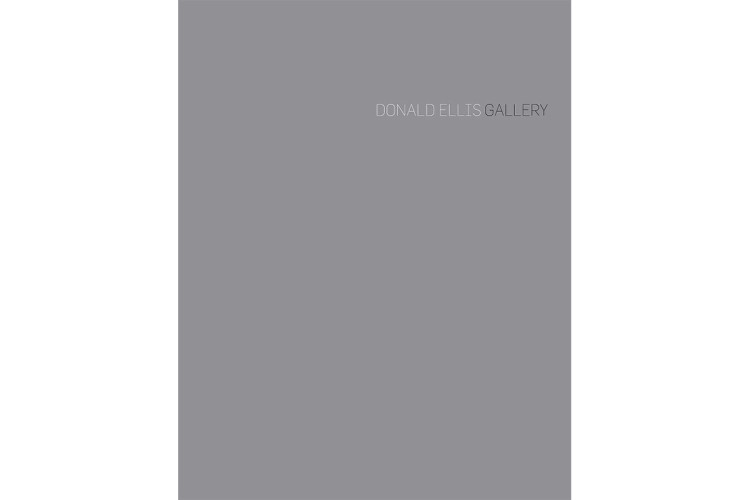Crest Headdress
Northern British Columbia
ca. 1840
wood, abalone shell, copper, pigments
width: 16 ½"
Inventory # N3787
Sold
Provenance
Sylvia Duryee, Seattle, WA
Donald Ellis Gallery, Dundas, ON
Morton and Estelle Sosland Collection, Kansas City, MO
Exhibited
Seattle Art Museum, September 15, 1983 to January 8, 1984
Seattle Art Museum, February 19 to May 10, 1998
Published
Holm, Bill. Box of Daylight. Seattle: University of Washington Press, 1984, pg. 45, pl. 51
Brown, Steven C. Native Visions: Evolution in Northwest Coast Art from the Eighteenth Through the Twentieth Century. Seattle: University of Washington Press, 1998, pg. 92, pl. 4.46
Donald Ellis Gallery catalogue, 2003, pg. 45 and 2012, pl. 10
This animated headdress was worn at social ceremonies to display an inherited family crest. Hollowed out on the underside to sit directly on top of the head, this type of headdress evolved from classic war helmets worn by Northern Northwest Coast peoples in the 18th century, and later clan hats of the early 19th century.
Almost all Northwest Coast sculpture is ambiguous in nature, and therefore difficult to identify without firsthand knowledge from the original owner. At first glance, the large canine-like front teeth manufactured from trade copper would suggest a beaver, however, the absence of a crosshatched tail, a primary identifying feature, would indicate otherwise. The use of line dashing on the body in white and red pigments to suggest the long reddish-brown hair of the grizzly bear is a notable Tsimshian characteristic, and the most likely interpretation of this charming and engaging headdress.




